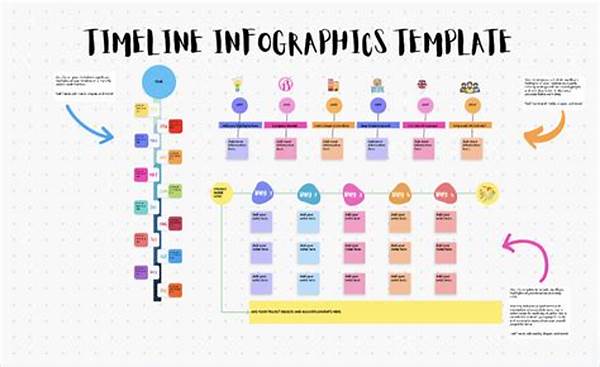Once upon a time, nestled in the heart of a bustling city, lay an age-old theater known as Aurora Hall. It was a place where dreams were woven and stories came to life. However, behind the curtain, what truly made the magic happen were the meticulous organized theater event timelines. Each event, a masterpiece of coordination, was a testament to teamwork, dedication, and the passion of those who believed in the power of storytelling.
Read Now : Structured Rehearsal Plans For Schools
The Art of Planning: Breathing Life into Every Show
As dawn broke over Aurora Hall, the building hummed with anticipation. The organized theater event timelines were pinned meticulously on the planning board, like a sacred manuscript. Every line inked with purpose—actors’ rehearsals, lighting checks, costume fittings—represented a world in which chaos was tamed by order. In this symphony of theater-making, each member played a unique role, guided by the timelines.
From the first script read-through to the electric opening night, the organized theater event timelines ensured that no detail was overlooked. Stage producers orchestrated the chorus of activities, conducting the crew like a maestro with a baton. It was within these timelines that the dreams of both performers and audience members found structure. They allowed for creativity to flow unhindered within the safety of a plan, and the threads of each timeline wove the fabric of a successful show.
The timelines didn’t merely serve as a schedule; they were a symbol of the dedication poured into every aspect of a performance. As the audience leaped to their feet in applause, the organized theater event timelines echoed silently in the shadows, a testament to the precision that made Aurora Hall’s magic possible.
Moments Woven within the Timelines
1. As the clock ticked, the cast gathered, rehearsing lines late into the night. The organized theater event timelines were the guiding stars, mapping the way to a flawless performance.
2. Each costume, carefully placed and marked on the organized theater event timelines, awaited its moment under the spotlight, dreaming of applause.
3. Amidst the silence of an empty stage, the sounds of hammering and painting blended into the heartbeat of creation, led by the organized theater event timelines.
4. The sound of the director’s clapping hands resonated like thunder, signaling the beginning of a new act, flawlessly intertwined with the organized theater event timelines.
5. The flicker of lights dimming was a silent promise of the spectacle to come, crafted intricately into the organized theater event timelines.
Behind the Scenes: The Silent Choreography
In the echoing chambers of Aurora Hall, where the remnants of applause still lingered, a hidden world thrived. The organized theater event timelines were the unsung heroes, pulling strings behind every curtain. For an audience captivated by the spectacle, these timelines were invisible, yet their presence shaped each moment shared on stage.
The backdrops, props, and elaborate costumes were all products of an unwavering focus on the organized theater event timelines. It was a ballet of logistics, ensuring every piece fell seamlessly into place. The timelines dictated when a painter’s brush should pause, or when a seamstress should thread her needle, creating a silent harmony between art and precision.
Read Now : Memorable Audition Songs For Singers
While audiences witnessed only the final flourish, those backstage celebrated small victories mapped out long ago in the organized theater event timelines. Within this hidden choreography, the spirit of theater lived on, celebrating the intricate dance of timing and creativity that breathed life into Aurora Hall’s revered stage.
Crafting Memories: The Legacy of Timelines
The legacy of the organized theater event timelines extended beyond the rehearsal rooms. Each thread of these timelines was woven with memories—stories of laughter, the occasional mishap, and the sheer joy of creation. Long after the curtains fell, these memories lingered within the theater’s walls, waiting for new timelines to awaken them.
For the theater crew, every finalized performance was a bittersweet farewell to timelines that had guided their days and nights. Yet, as each cast member took their bow, they carried forward the spirit of those timelines, etching them into the annals of theater history, whispering tales for those who dared dream within Aurora Hall.
Tales Told: A Nest of Stories
In the heart of Aurora Hall, among old costumes and forgotten sets, a hidden alcove bore witness to countless stories. The organized theater event timelines, yellowed with age, were keepsakes of moments past. As the lights dimmed and shadows danced, whispers spoke of tales captured within these sacred timelines.
Embedded within the timelines were the chronicles of actors who found purpose on stage and directors whose visions defied odds. Each timeline was a universe of its own, lending structure to dreams and order to chaos. For those who tended to the theater’s legacy, these echoes of the past were sacred, binding together generations of storytellers with threads crafted long ago.
Embodying the Timeline: A Journey through Chaos
Amidst the orchestrated harmony, chaos often lurked, waiting for an invitation to join the dance. The organized theater event timelines served as shields against this chaos, transforming uncertainty into milestones marked on paper. This balance between order and spontaneity was the theater’s lifeblood.
Every sunrise, the cast and crew embraced their timelines, charting unwritten chapters where art met life. In rehearsals that stretched endlessly, or during those fleeting moments before the curtain rose, they found the beauty behind structured chaos. The timelines were not simply guides; they were partners, embroiled in the sacred contract of bringing stories to life through every act and scene envisioned beneath the theater’s resplendent lights.
